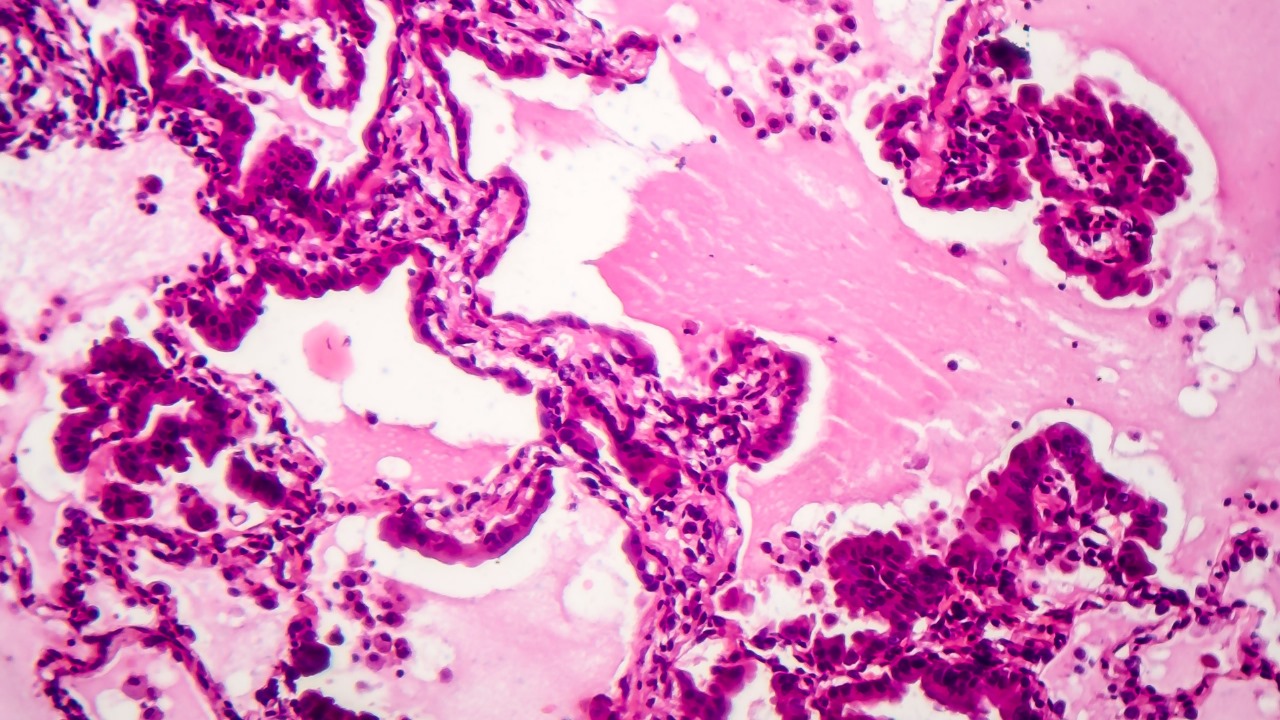
While lung cancer is often associated with smoking, a significant number of non-smokers are diagnosed with this disease every year. Understanding the most common type of lung cancer in non-smokers, examining detailed cases of known individuals who have had this cancer, and exploring prevention strategies are essential for raising awareness and improving outcomes.
Most Common Lung Cancer in Non-Smokers: Adenocarcinoma
Adenocarcinoma is the most common type of lung cancer diagnosed in non-smokers. This
type of cancer originates in the glandular cells that line the alveoli and are responsible for
producing mucus and other substances. It tends to grow more slowly than other types of
lung cancer and is often found in the outer parts of the lungs. Key characteristics include:
- Symptoms
Persistent cough, chest pain, shortness of breath, and unexplained weight loss. - Risk Factors
Genetic mutations, exposure to radon gas, secondhand smoke, and environmental
pollutants such as asbestos and air pollution. - Diagnosis
Imaging tests like CT scans, biopsies, and molecular testing to identify specific
genetic mutations that can inform targeted therapies.
Five Known Individuals in Asia Diagnosed with Lung Cancer as Non-Smokers
1. Alice Tan (Singapore)
Alice Tan, a well-known TV presenter in Singapore, was diagnosed with adenocarcinoma in
2016. Despite having no history of smoking, she experienced persistent cough and fatigue,
leading to her diagnosis. Tan has since become an advocate for lung cancer awareness and
early detection, emphasizing the importance of regular health check-ups even for non-smokers.
2. Yoshihiro Nakamura (Japan)
Renowned Japanese chef Yoshihiro Nakamura was diagnosed with lung adenocarcinoma in
2018. Nakamura's case drew significant media attention due to his high-profile status and
healthy lifestyle. His treatment included surgery and targeted therapy, and he has since used
his platform to raise awareness about lung cancer in non-smokers and promote healthy
living.
3. Anita Mui (Hong Kong)
Famous Hong Kong singer and actress Anita Mui was diagnosed with lung adenocarcinoma
in 2003. Known for her contributions to the entertainment industry, Mui’s battle with lung
cancer despite being a non-smoker brought considerable attention to the disease. Her story
highlighted the need for better understanding and research into lung cancer risk factors
beyond smoking.
4. Dr. Amita Gupta (India)
Dr. Amita Gupta, a respected oncologist in India, was diagnosed with lung adenocarcinoma
in 2015. Her diagnosis was particularly striking given her extensive knowledge and work in
cancer treatment. Dr. Gupta has since become a prominent figure in advocating for lung
cancer research and patient support services, particularly focusing on non-smokers.
5. Chen Shih-Chieh (Taiwan)
Taiwanese politician Chen Shih-Chieh was diagnosed with lung adenocarcinoma in 2019. As
a public figure, his diagnosis raised public awareness about lung cancer in non-smokers and
the importance of early detection. Chen’s case underscores the need for comprehensive
health policies addressing lung cancer prevention and treatment.
Addressing Risk Factors
1. Radon Gas Exposure
- What is Radon? Radon is a naturally occurring radioactive gas that can accumulate
in homes, particularly in basements and ground floors. - Prevention: Regularly test homes for radon levels using radon detection kits and
install radon mitigation systems if necessary.
2. Secondhand Smoke
- Impact: Non-smokers exposed to secondhand smoke are at increased risk of
developing lung cancer. - Prevention: Implement strict no-smoking policies in homes, workplaces, and
public areas. Educate about the dangers of secondhand smoke and support
policies that reduce tobacco use.
3. Environmental Pollutants
- Air Pollution: Prolonged exposure to air pollution, including fine particulate matter
(PM2.5), can increase lung cancer risk. - Prevention: Advocate for and support policies aimed at reducing air pollution. Use
air purifiers indoors and avoid outdoor activities during high pollution days.
4. Occupational Hazards
- Asbestos and Other Carcinogens: Certain occupations expose workers to
carcinogens like asbestos, which can increase lung cancer risk. - Prevention: Ensure workplaces adhere to safety regulations that limit exposure to
known carcinogens. Provide protective equipment and regular health screenings for
at-risk workers.
Lifestyle and Health Strategies
1. Diet and Nutrition
- Antioxidants and Phytochemicals: A diet rich in fruits and vegetables can help
protect cells from damage. - Healthy Eating: Emphasize a balanced diet with adequate intake of vitamins,
minerals, and antioxidants.
2. Regular Exercise
- Physical Activity: Engaging in regular physical activity helps maintain lung health
and overall well-being. - Recommendation: Aim for at least 150 minutes of moderate-intensity exercise per
week.
3. Health Screenings
- Early Detection: Regular health check-ups and screenings can help detect lung
cancer early when it is most treatable. - Screening Programs: Support and participate in lung cancer screening programs,
especially for those with a family history of cancer or other risk factors.
Lung cancer in non-smokers, particularly adenocarcinoma, is a significant health concern
that requires increased awareness and research. By understanding the risk factors, learning
from the experiences of known individuals in Asia, and implementing comprehensive
prevention strategies, we can better address this silent threat. Regular health check-ups,
advocating for clean environments, and supporting research are critical steps in the fight
against lung cancer for everyone, not just smokers.



